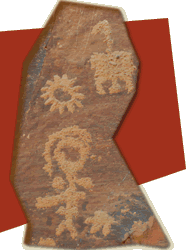Shamanic Healing

Shamanic healing is spiritual in nature.
Its techniques are not therapy as generally defined by modern psychology or medicine, and they are not a substitute for the therapeutic methods practiced by these fields. However they may serve as powerful complements to those methods.
Shamanic practitioners have a wide selection of techniques to draw upon. It is not uncommon for techniques to be fine-tuned or customized to minister to specific situations. Indeed, sometimes entirely new, or personally unique, ways of working may be shown to a practitioner by spirit teachers or helpers.
While anecdotal and experiential evidence concerning the efficacy of given shamanic techniques may be extensive, the non-material nature of shamanic work, as well as the vast array of possible responses to it, makes empirical documentation of effectiveness difficult. (How can we prove that a person’s soul has returned to them beyond their own testimony that they feel it has?) Therefore no definitive representations can be made as to any physical, mental or emotional benefits to be gained from using these ancient methodologies. Those seeking shamanic assistance are encouraged to determine for themselves if this kind work is of personal benefit.
most common and powerful methods of shamanic healing.

Soul Retrieval
When a person is subjected to undue stress or trauma, be it physical, emotional, or psychological, a part or parts of her or his spirit may break away and become separated from that person’s larger soul.
This separation serves to protect those parts which otherwise might experience severe injury or even destruction, and is best viewed as a useful short-term coping mechanism in extreme cases, even a survival mechanism — during trying times. It is a gift of love that a Self gives to itself. In the long term, however, if the soul parts do not return to the person, problems may ensue. It is as if you were trying to play a game of cards, but a couple of the cards in your hand had slipped to the floor. Even if your remaining cards are all aces and kings, and the missing cards are only deuces and trays, and even if ordinarily you are a superb player, you will not be able to play the game as effectively as if you were holding all the cards you were dealt. Similarly people with soul loss, no matter how well they function in certain specific areas, may be challenged in the overall effective living of their lives.
Power Animal Retrieval
Most people have at least one spirit helper in animal form. It is possible to have more. As a rule, these helpers are present whether we are consciously aware of them or not. They provide protection, assistance, wisdom, direction and companionship. In a shamanic worldview, the individual’s personal power and physical vitality is a gift from these helpers, hence the term “power animals”. These spirits generally take the form of undomesticated animals and like their physical counterparts, they are wont to come and go as they please. When one — for whatever reason — leaves the company of a person, another power animal usually appears to take its place. However, if that does not happen, the person may experience a diminishment of personal power which might manifest as serious illness, emotional malaise, extraordinary bad luck, personal crisis or some other noticeable way.
A shaman addresses this loss of power by journeying into the spirit world to discover an animal spirit that had previously been their client’s companion. Prevailing upon the animal’s compassion, the shaman beseeches it to return to its human friend. If the animal agrees, the shaman escorts it back to the client. After such a retrieval the client may experience a resurgence of power, health or effectiveness.
Shamanic Extraction
Shamanic cultures often consider the presence of spirit intrusions to be an important component in serious sickness and disease. These intrusions are not evil, but are inappropriately situated on or in a person’s body. To a person using shamanic sight, they may appear in a number of ways. They might have the form of insects, spiders, centipedes or other creepy-crawlies. They might appear to be sharp-pointed objects penetrating or impaling the body and ranging in size from pins and needles all the way to broadswords and pitchforks.
Sometimes, to me, they look like blobs of essentially shapeless tar or oily, viscous gunk. At other times, they seem to be very heavy boulders or stones. One practitioner might see these intrusions in one form and another practitioner might see them in an entirely different way. However, whatever form they take, it is clear to the practitioner that they should not be present.